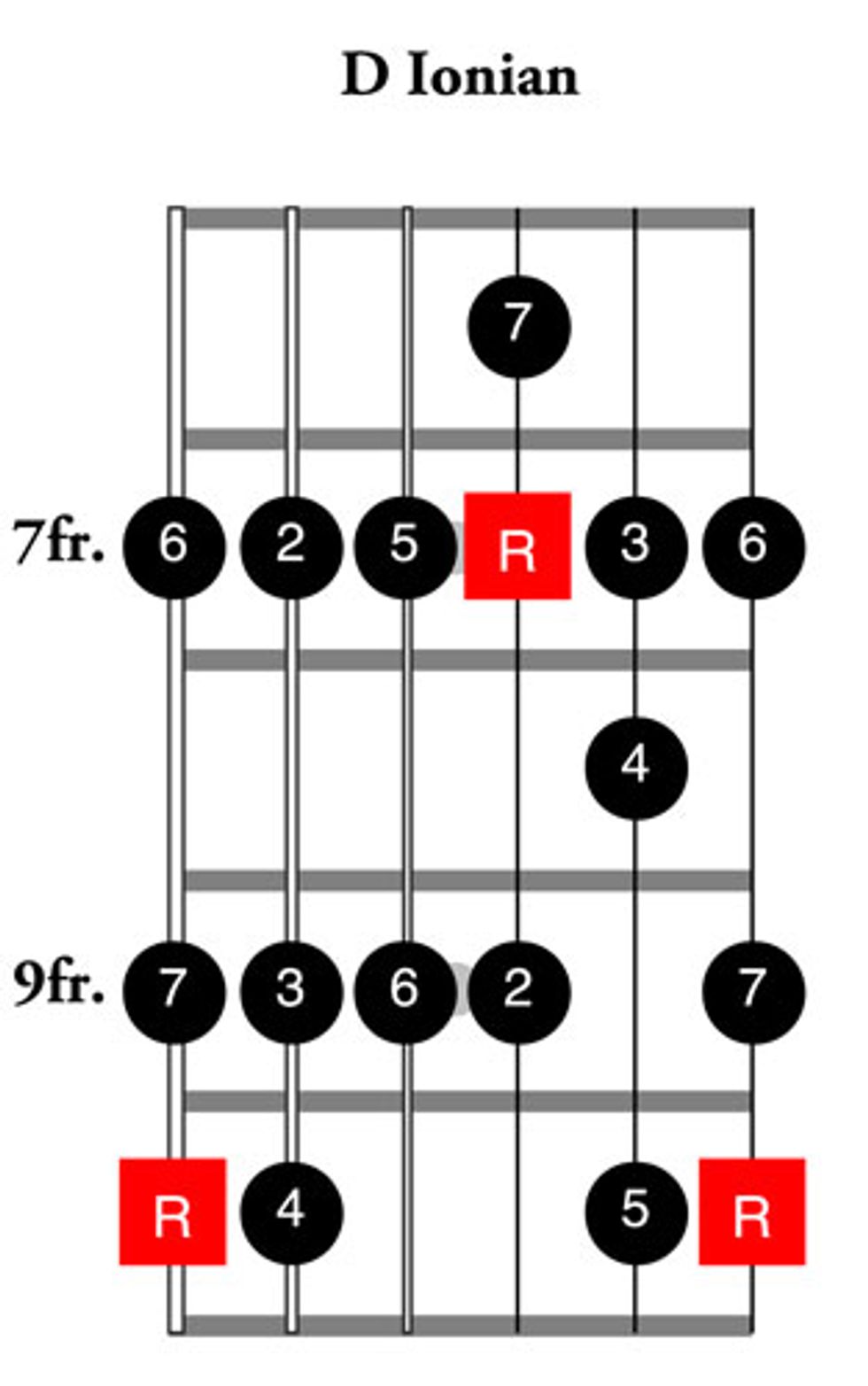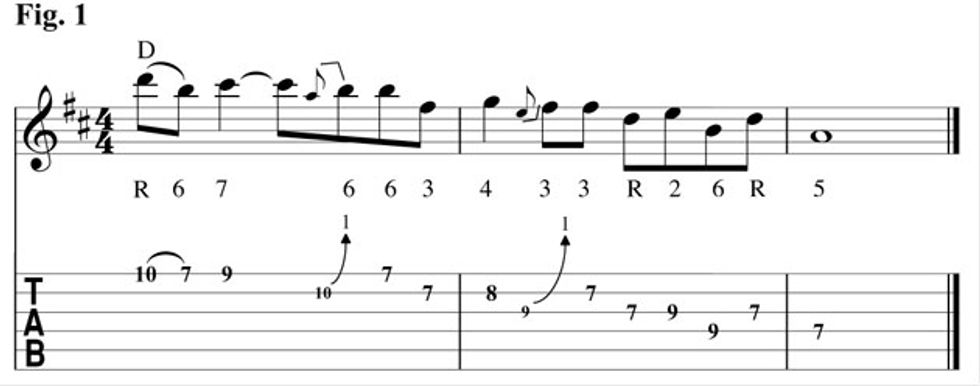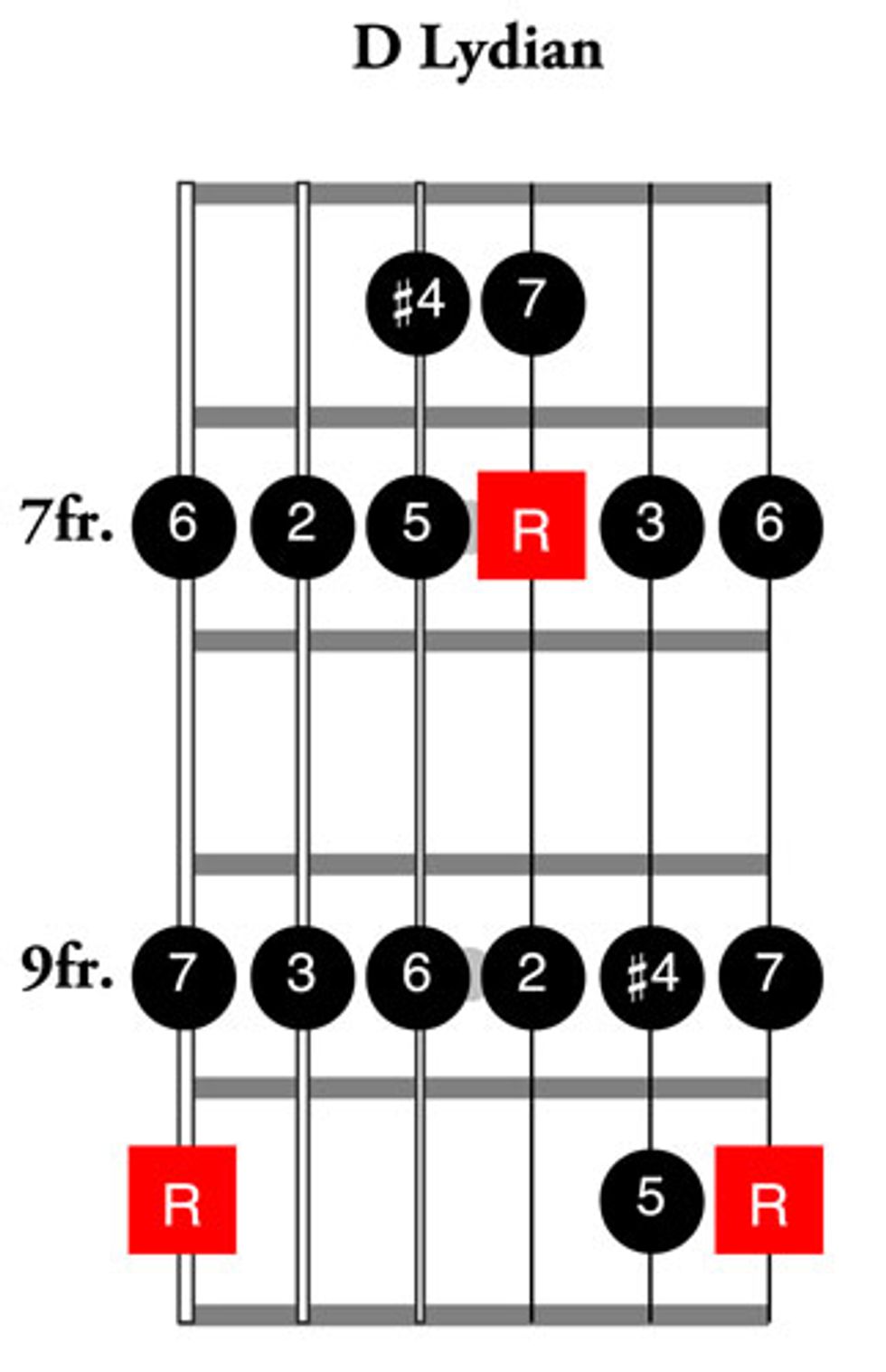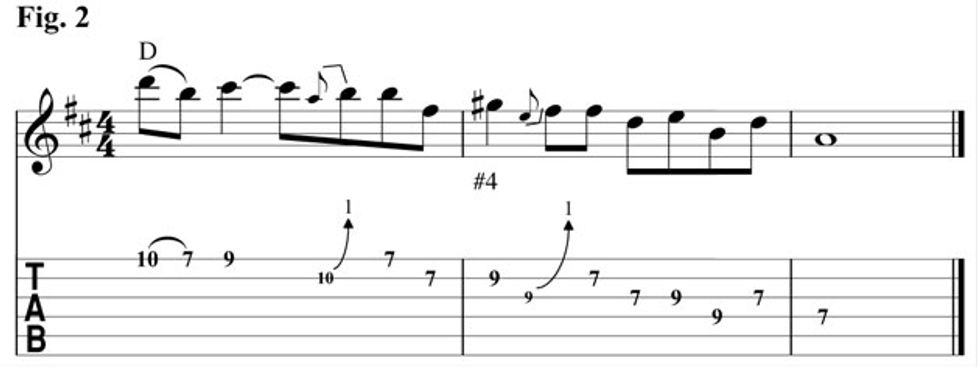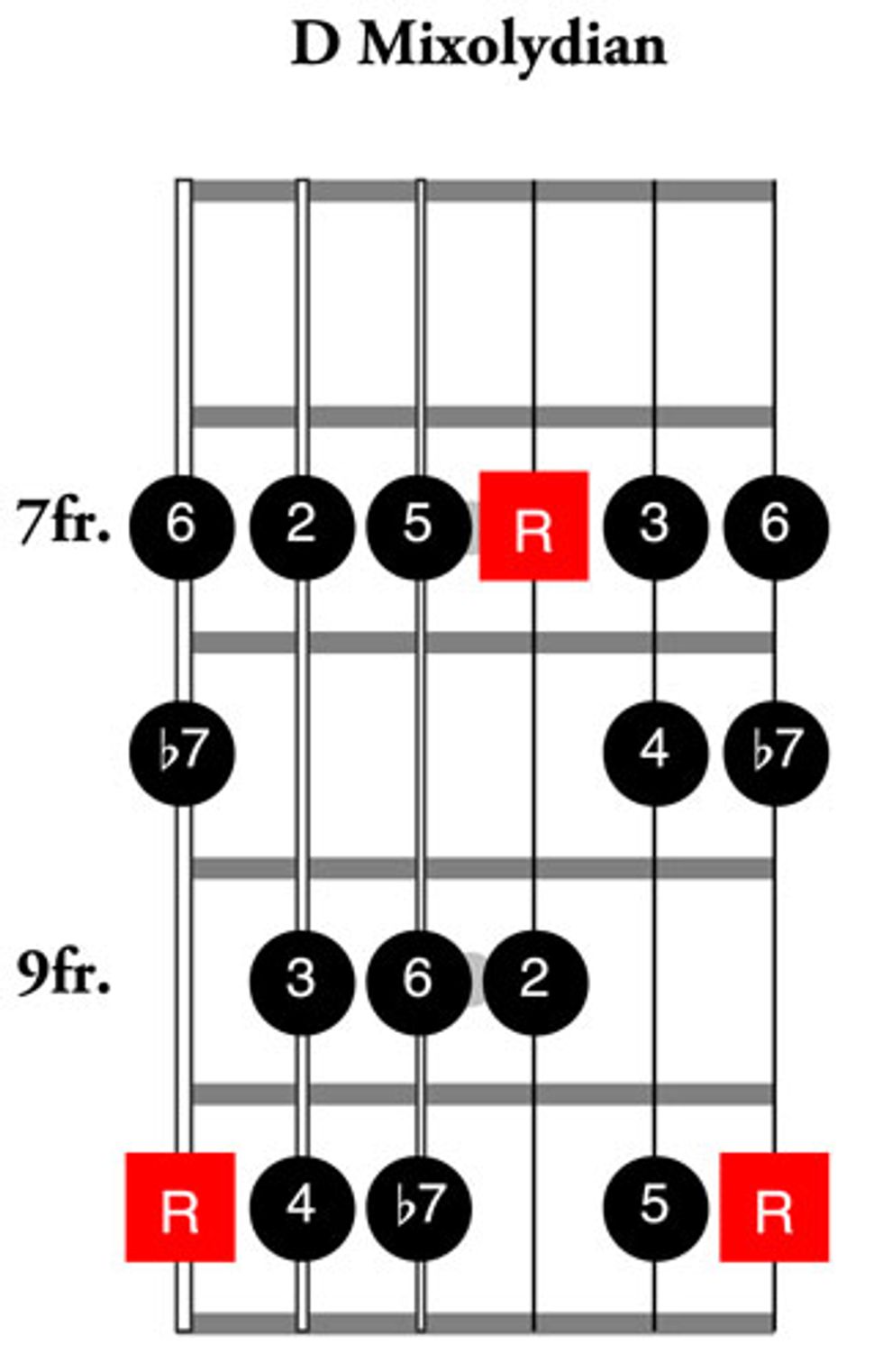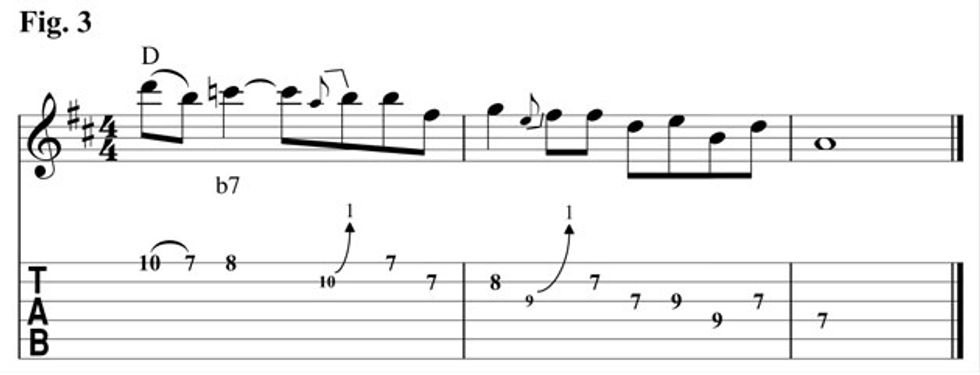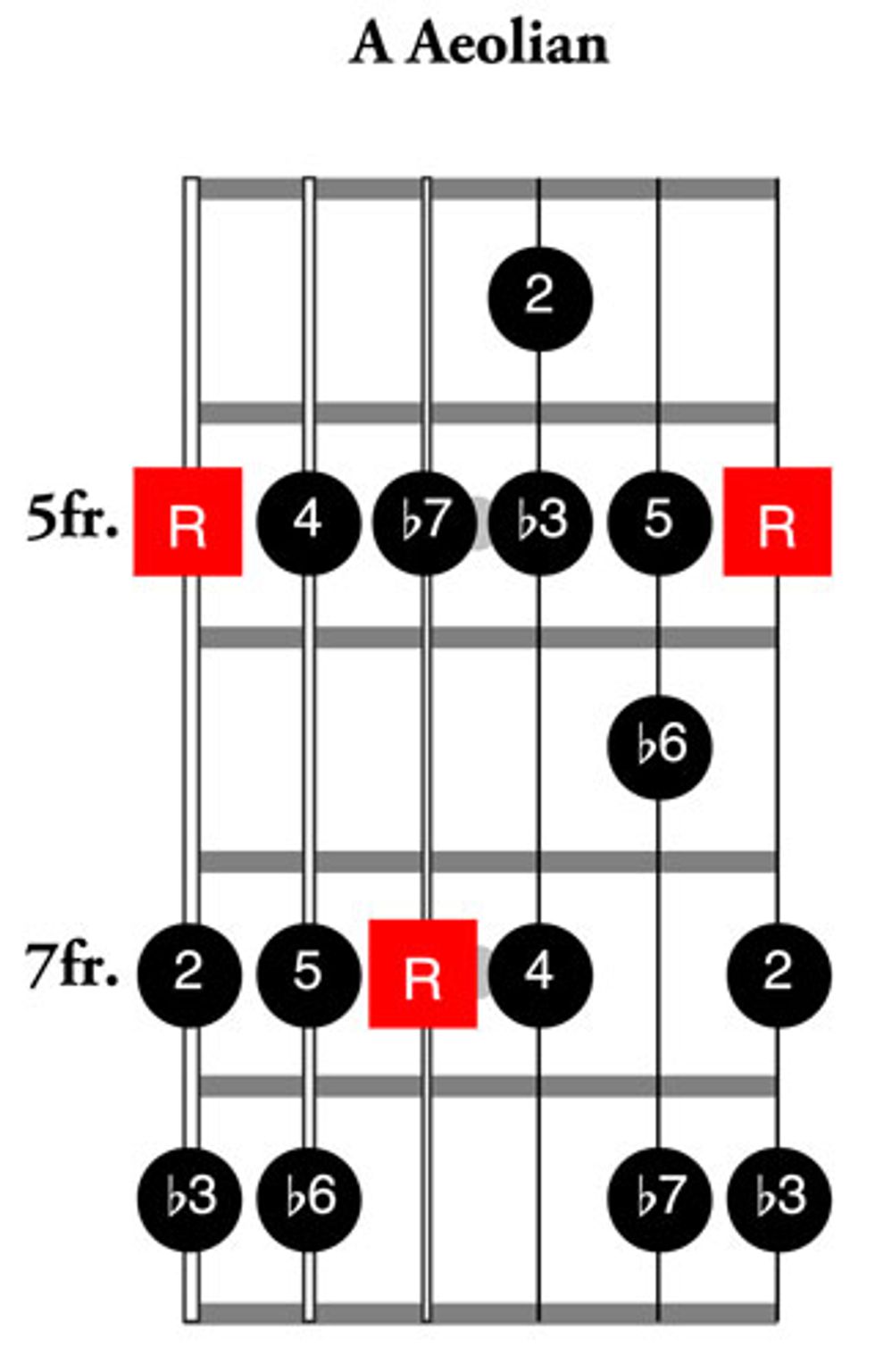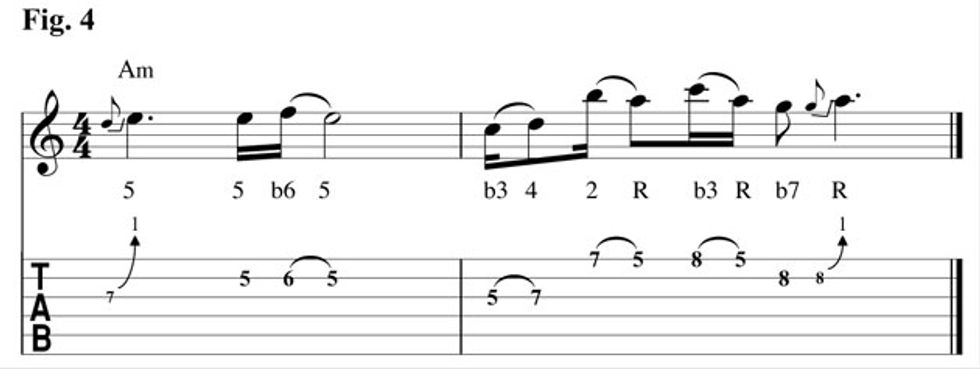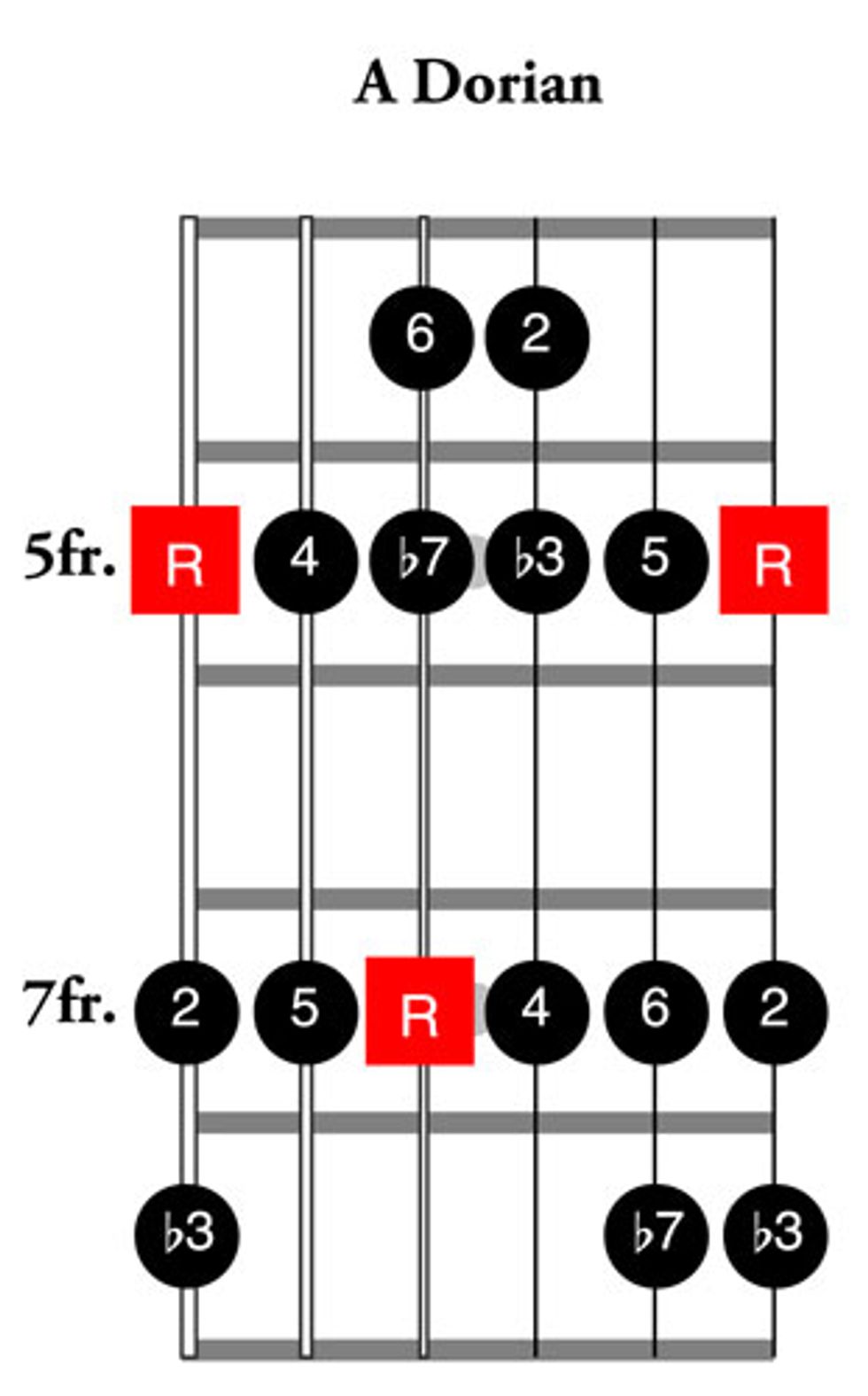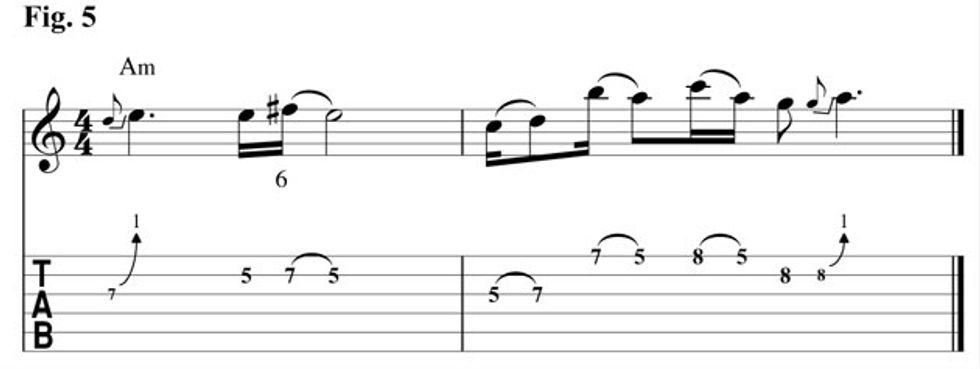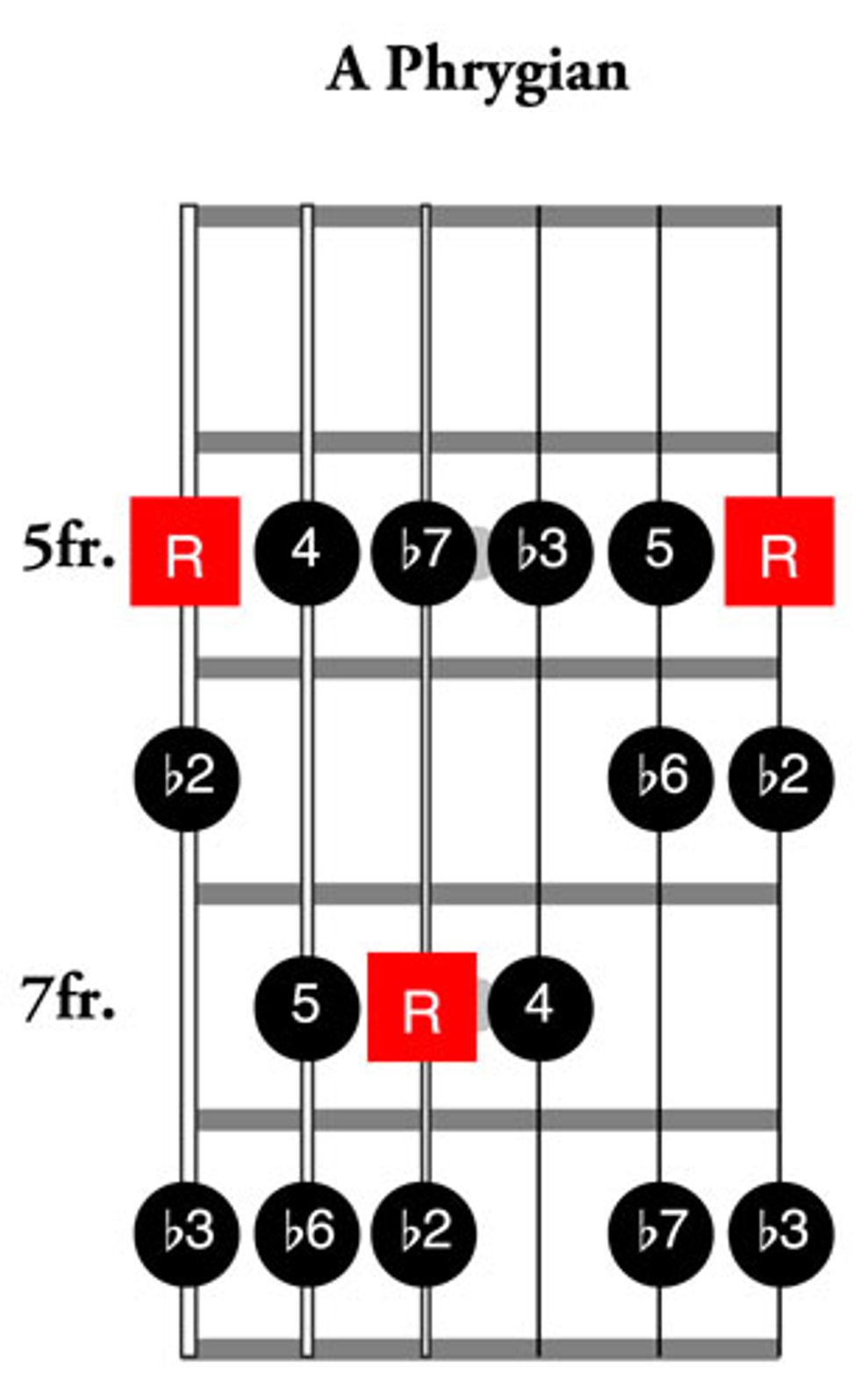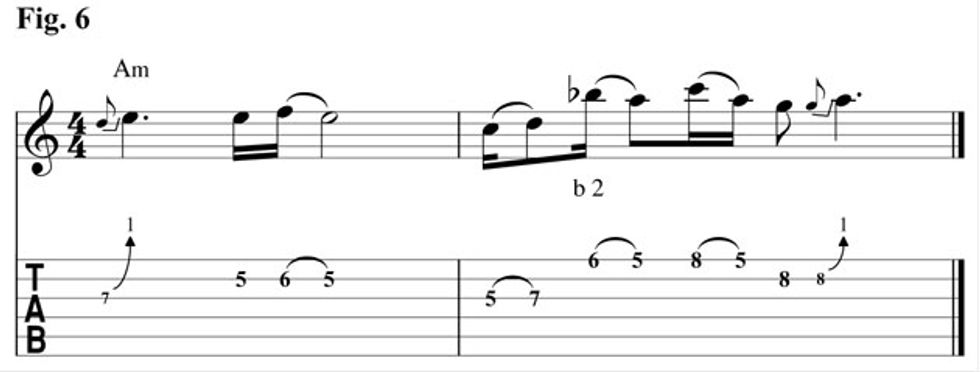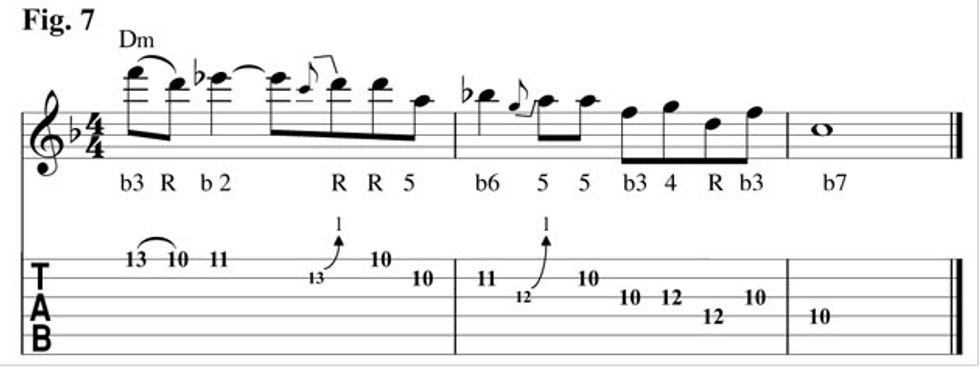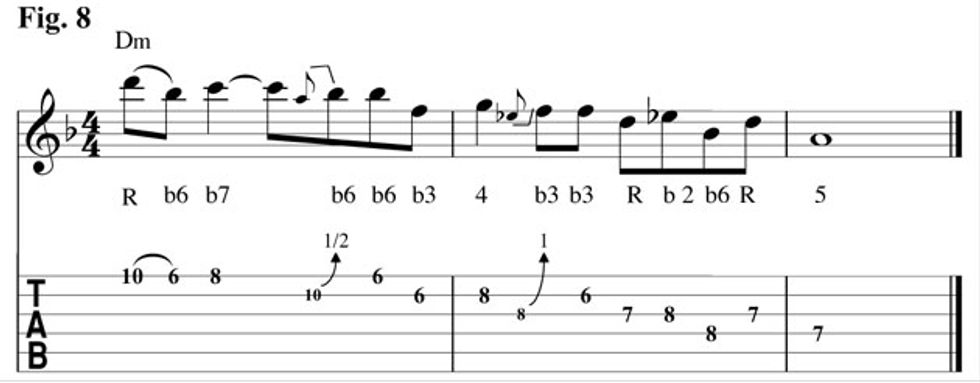With a few minor tweaks you can make a single lick work in nearly every context.
Chops: Intermediate
Theory: Intermediate
Lesson Overview:
• Learn to analyze a phrase based on intervals.
• Adjust melodies and licks to work in a variety of harmonic contexts.
• Develop a better understanding of the modes within the major scale.
Click here to download a printable PDF of this lesson's notation.
There are many ways to be creative when coming up with licks or melodies over a set of chord changes or a static tonal center. Inspiration may not always strike, and reinventing the wheel (or at least trying to reinvent your own playing) can prove tough. But a dash of music theory and some simple analysis can help recycle old licks—whether yours or someone else’s—into fresh sounds. It might be the creative kick you needed to finish writing that blazing solo.
In a previous lesson, I demonstrated how to play in different modes while staying close to a blues-rock sensibility. On guitar, this means exploring modal fingerings based on a root-position pentatonic scale. We’ll stick with this approach as we examine two simple licks, one based on the major scale (or Ionian mode), and the other one on the minor scale (or Aeolian mode).
First, the major sounds. The diagram below is a fingering for the major Ionian mode based on the root-position major pentatonic fingering. Numbers indicated each scale degree.
Fig. 1 is the lick based on that fingering. The numbers between the staff and the tab represent the scale degrees. Observe their location in relation to the diagram.
To play in Lydian rather than Ionian, just adjust the lick so that all the notes fit the Lydian mode (1-2-3-#4-5-6-7). You can stay in the same position and simply adjust the fingering so that every 4 is replaced with a #4. The other notes are unchanged. Fig. 2 is the new Lydian lick based on the fingering of the diagram below.
Let’s apply the same process to Mixolydian (1-2-3-4-5-6-b7). The only note to change is the 7, which moves to a b7, as seen in the diagram below.
Scary how deceivingly simple it all is, isn’t it? Now let’s look at Fig. 4, an Aeolian (1-2-b3-4-5-b6-b7) lick.
Let’s move to Dorian (1-2-b3-4-5-6-b7), where the b6 is replaced by a natural 6. Fig. 5 is your new Dorian lick, based on the fingering presented below.
Lastly, here’s the switch from Aeolian to Phrygian (1-b2-b3-4-5-b6-b7). Like magic, we create a Phrygian-based lick in Fig. 6.
Finally, let’s completely switch things around by turning the original major example into a Phrygian lick.
There are two ways to approach this: First, by keeping the fingering and pentatonic-based shape, but placing it in a minor context. Since the scale degrees differ between the major and minor fingerings, all the scale degrees of the original lick are switched around. You don’t need to be aware of the degrees of the old or new licks, as this approach is strictly shape-based, but you still need to make some adjustments for the new Phrygian fingering. Fig. 7 is the result.
The second approach is to adjust each scale degree of the original lick. Once you’ve done that, you may end up with some unfamiliar fingerings (which might be worth exploring). In Fig. 8 we are firmly outside of the pentatonic bubble.
This simple procedure can yield many variations on a single lick—and those are just the possibilities involving modes derived from the major scale. I used pentatonic-based fingerings for the sake of accessibility and guitar friendliness, but you can apply the procedure to any fingering, mode, scale, melody, or chord. Try turning a Dorian melody into a harmonic minor melody, or turn a Phrygian major lick into a Super Locrian one. Go as far as your theory knowledge allows.
There are only twelve notes to choose from in the Western music system. An adjustment may seem small, but its result can be dramatic and ear opening. The new sounds may inspire you to delve deeper into a mode, chord, or tonality. Creativity feeds on itself, and the process can be at least as rewarding as the end result. As they say, it’s about the journey, not the destination. Happy exploring!
